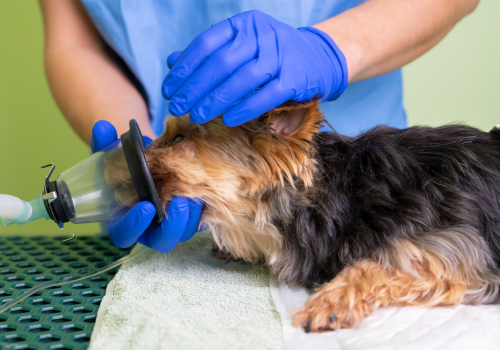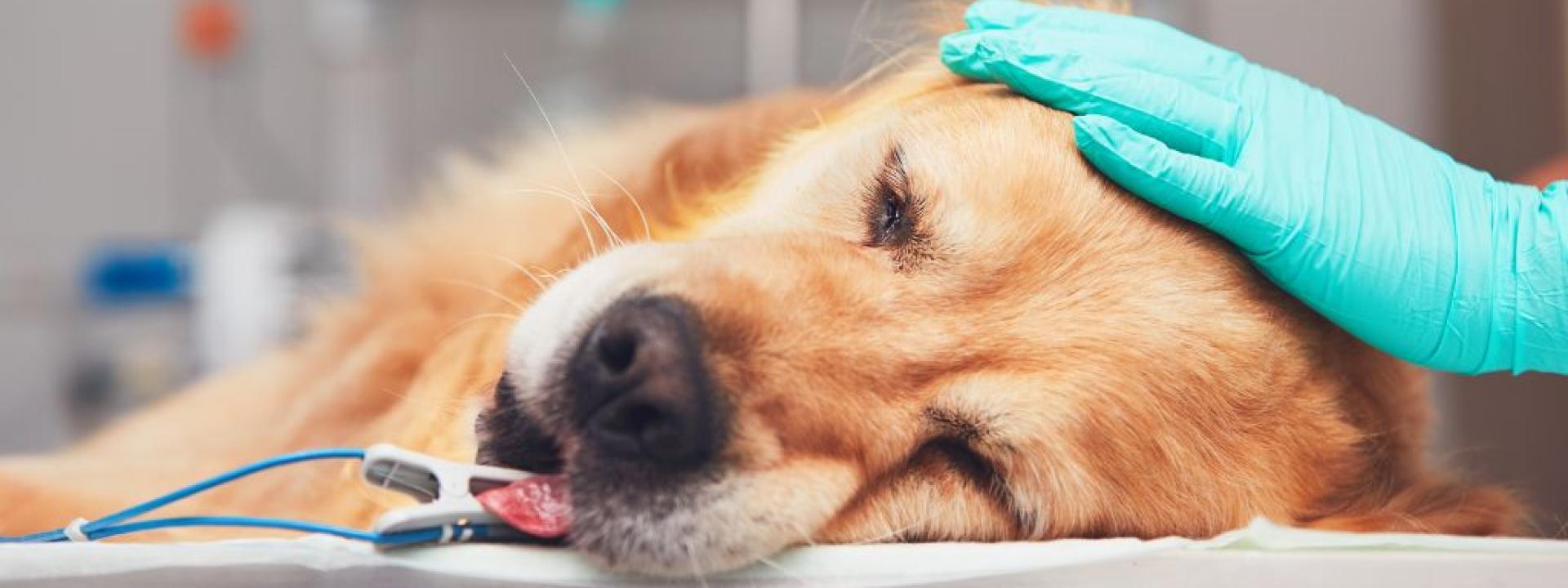Knowing your dog will require anesthesia for an upcoming procedure comes with a great deal of worry and uncertainty, especially if your dog has never previously been under anesthesia. While a rare complication can arise based on the dog’s health, breed, age, and size, procedures requiring anesthesia are safe for dogs and routine for veterinarians. To ease your concerns, you might have visited search engines for insight. At Veterinary Medical Center, we work hard to present reliable information you can trust. To avoid online misinformation that could worry you even more, we’ve taken FAQs about dog anesthesia and answered them as thoroughly as possible, so you have factual information.
If you’re looking for a highly trained veterinarian in Union City, CA, we’d love to see your dog for an examination before any surgical needs, so please call us at (510) 441-8500.
What are the different types of anesthesia?
Anesthesia comes in a few different forms, depending on your dog’s need and the stage of a surgical procedure.
Different types of anesthesia used in dogs include:
- Initial/pre-anesthetic – given to calm pets in pain and used to wake them up from surgery
- Induction anesthesia – brings a dog under anesthesia so they can be intubated
- General anesthesia – gas delivered by endotracheal tube during a surgical procedure
When would my dog need anesthesia?
Dogs require anesthesia when they undergo surgery and other types of painful procedures, such as wound repair requiring stitches, a dental procedure requiring x-rays, and keeping their mouth open for an extended period. A veterinarian might also recommend anesthesia when a dog needs diagnostic imaging if it’s unlikely they’ll remain still long enough for the team to take the images.
Are particular dog breeds more sensitive to anesthesia?
Some dog breeds are more sensitive to anesthesia, such as sighthounds and greyhounds. They are prone to hyperthermia when given certain types of sedation or anesthesia and may experience prolonged recoveries. In addition, smushed-face breeds (brachycephalic) such as English bulldogs have compromised breathing and therefore have higher airway-related complicate rates.
What do I need to know before my dog goes in for an anesthetic procedure?
Before your dog goes in for a procedure requiring anesthesia, your veterinarian will perform a complete physical examination to help assess any risk. This will include blood work, including blood chemistry, blood count (CBC), and an electrolyte test. It’s also important that you share your dog’s medical history with the veterinarian performing the procedure, including any allergies. Once your doctor clears the dog for the procedure following the exam, they will ask that you withhold food from your pet overnight. Upon arrival, your dog will be given a mild sedative to keep them calm. The AVMA details what to expect before, during, and after a procedure involving anesthesia.
What are some of the possible complications of anesthesia that my dog could experience?
When anesthetizing, the surgical team is taking control of your dog’s breathing — controlling their heart rate and blood pressure. Potential complications could be related to any underlying disease of the kidneys or heart. In addition, a dog’s size and age could also be a factor in anesthesia-related complications.
Possible complications of anesthesia are often related to:
- Size– Toy breeds are at increased risk of complications since they are more prone to hypothermia, are more difficult to intubate, and can be overdosed due to their small size. Conversely, giant breeds are at risk because they require significantly larger doses of anesthesia. Weight also plays a factor, with overweight dogs experiencing complications more often than dogs at a healthy weight. Many veterinarians will recommend that an overweight dog shed a few pounds before undergoing a procedure requiring anesthesia.
- Age– Age plays a factor in anesthesia since senior dogs may have compromised organs and systems, and puppies’ organs aren't quite mature. This is why pre-operative exams and blood tests are essential – to assess risk factors and ensure your dog is healthy enough to endure a procedure under anesthesia.

What monitoring will be done by the veterinary staff to ensure my dog is safe while he's under anesthesia?
Monitoring a dog during an anesthetic procedure is similar to what happens with humans undergoing surgery. Their heart rate, respiration rate, and CO2 levels are closely monitored, and an EKG is running during the procedure to watch their heart activity. There are also trained veterinary staff monitoring your pet physically, including keeping track of their temperature because low temperature is a risk factor.
What do I need to watch for at home after my dog has had an anesthetic procedure?
Your veterinarian will monitor your dog immediately after anesthesia, and when they are recovered enough to go home, they’ll send you home with instructions. Your dog might be a little drowsy for a period, so you’ll want to keep them confined to a safe area where they can't fall off any furniture and hurt themselves. You’ll also want to limit their exposure to other pets in the home, so they don’t become overwhelmed. In addition, certain procedures require IV fluids to be administered, so they might not be able to hold their bladder and bowel movements very long when they first come home. It may take several days for your dog to act like their normal self again.
If you live in or near Union City, CA, we’d love to see your dog for a complete examination to ensure they’re in top health for any future surgical needs, so please don’t hesitate to call us at (510) 441-8500 or email us at [email protected].

